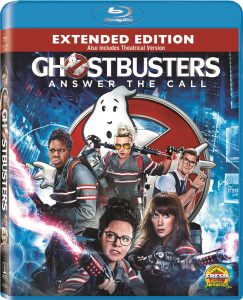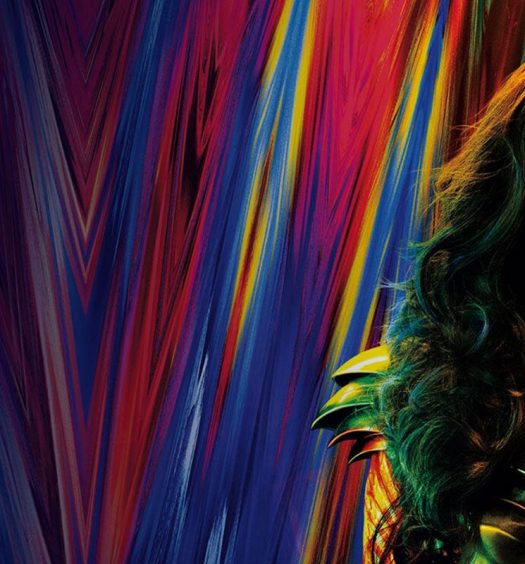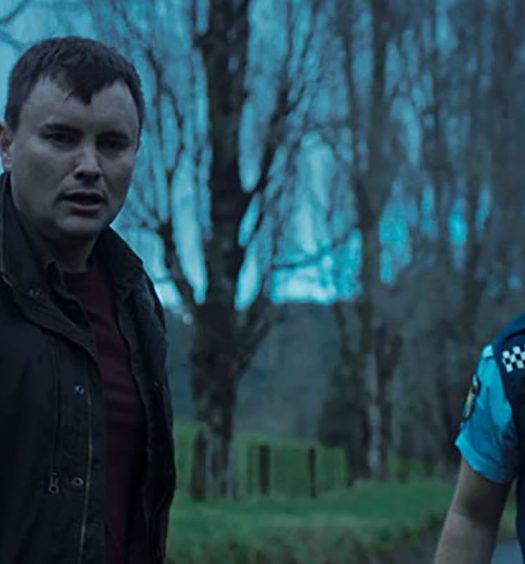Movie Review: Ghostbusters (2016)
 Ghostbusters. It’s not a title you’d expect controversy over, at least not among the living. Yet Paul Feig made an update of the 1984 classic with an all-women team of Ghostbusters, and the Internet lost its collective mind. Many people behaved badly. Trolls came out to play. Productive conversations concerning feminism happened, at least, even in a veritable sea of uninformed hate. Ghostbusters became a rallying point for feminist interrogation of pop culture.
Ghostbusters. It’s not a title you’d expect controversy over, at least not among the living. Yet Paul Feig made an update of the 1984 classic with an all-women team of Ghostbusters, and the Internet lost its collective mind. Many people behaved badly. Trolls came out to play. Productive conversations concerning feminism happened, at least, even in a veritable sea of uninformed hate. Ghostbusters became a rallying point for feminist interrogation of pop culture.
Feminism deserves better, which Alyssa Rosenberg covers with acuity at The Washington Post.
Paul Feig’s Ghostbusters can be a fun movie, especially when combined with a ladies’ night in and a judicious number of drinks. (Ooo, and Twizzlers. …no? More for me!) The cast is fantastic, carried by sharply funny women with great comedic instincts. It’s just not a particularly good movie, afflicted with poor pacing and wasted potential.
Let’s cover the good bits up front: Leslie Jones as Patty Tolan and Kate McKinnon as Jillian Holtzmann completely steal this movie. They are PHENOMENAL. Patty Tolan is a Ghostbuster who hires herself, because she’s qualified and she takes care of the team – even if the best-friends-on-the-outs protest that she’s not a scientist. Patty is one educated force of humanity, and familiar with NYC on a historical and folkloric level needed in any supernatural-hunting organization. Holtzmann is a Q worthy of the Ghostbusters universe, trading in wackiness like it’s going out of style – and it feels completely natural. It’s amazing. Her slice of playful genius infused humor into scenes otherwise boring. I wanted to pluck Tolan, Holtzmann, and their compelling chemistry out of this bland flick and put them down in a Ghostbusters more worthy of them.
The technology in the film was one of its core fun components, as soon as you get beyond the requisite proton pack. The disruptive grenade was an inspired addition, and the ghost-punching brass knuckles were flat-out The Best. Any old-school fan can appreciate the shredder riff on the original trap shape; I just wished Holzmann had explained the gun sidearm she was so antsy about – when Wiig’s Gilbert used it in their big fight scene, it read like a nuclear-powered flintlock but was discarded too quickly. Every bit of tech employed involved visual displays that were a sheer treat when combined with ectoplasmic apparitions. Throw in the technobabble alongside both mental and physical badassery, and you’ve got a winning combination.
The cameos were also spot on, with pride of place given to Dan Akyroyd’s cab driver for funniest moment of the film. “I don’t go to Chinatown, I don’t drive wackos, and I ain’t afraid of no ghosts!” is vintage quotable Ghostbusters. You’ll also find a preeminent mentor Sigourney Weaver, a scoffing skeptic Bill Murray, a true-to-form Annie Potts, and a last minute Ernie Hudson. If only Rick Moranis had agreed to come on, and we still had Harold Ramis! (The film badly missed the contributions of Ramis in the writer’s room. Akyroyd too.)
That’s it; those were the best parts of the film. The first big knock against Feig’s Ghostbusters is that it chose to be a remake rather than a sequel. Any passing-the-torch story would have played so much better, allowing this movie to acknowledge the Ghostbusters franchise continuity in a meaningful way. The audience could have had an entry point based on connection, rather than the alienation of rehashing well-worn plot points. As it was, the movie asked us to feel unearned joy of discovery with every familiar beat – but we’ve already been there for the “ghosts are verifiable!” moment and the sliming and the development of the proton packs and traps. They did nothing in a suitably unique way to invite fresh feelings. The poor pacing and drawn out, repetitive jokes didn’t help.
Just as there was no freshness to the joy of Ghostbusters, the thrill of fear was likewise stale. I’ve lived with the Ghostbusters for 30 years, and I STILL find the ghosts in the original film creep me out. (Not to mention the Lovecraftian horror of it all.) Part of this may be the transition from largely practical to largely digital effects; however, I think a larger issue is the lack of grounding. There were no little moments in this film to really ground the haunts’ actions to the people’s terror – just a random, unconnected carnival of ghosts behaving badly. They were pretty, but empty. The creepiest ghost was the mannequin, and it lasted less than a minute before becoming a heavy metal goat-devil.
Most disappointingly of all, even with so much rehash, Feig’s Ghostbusters had no proud moment of unity when the people of NYC came together and rallied behind the Ghostbusters, cheering them on. There was no establishment of a ghostbusting business, no worldbuilding where the common people believed their eyes, built trust in the Ghostbusters, and the government publicly mishandled the situation. NYC wasn’t there to collectively witness the Ghostbusters’ triumph, which severely undercut all that fine ghostbusting on display in the final scene. (Holy crap, that Holtzmann strut of awesome…!) That film-ending moment with the building lights? Not an acceptable substitute. Ghostbusters ALWAYS get their moment of pride, even if the city forgets them a few months later.
Paul Feig knows how to make funny movies, and I’ve loved several of his comedies. He worked with a brilliant cast on Ghostbusters – Melissa McCarthy and Kristin Wiig are funny actresses, but they didn’t shine here. Neither the script nor the lines gave them much to work with. Take Patty and Holtzmann off this ghostbusting team, and you’d suck the air out of the room; if there was a Lord of Comedy, Jones and McKinnon would be doing the Lord’s work. Ghostbusters is worth watching for those two alone – just don’t think too hard, and make sure you have friends on hand to chat with during the boring bits.


Comments are closed.